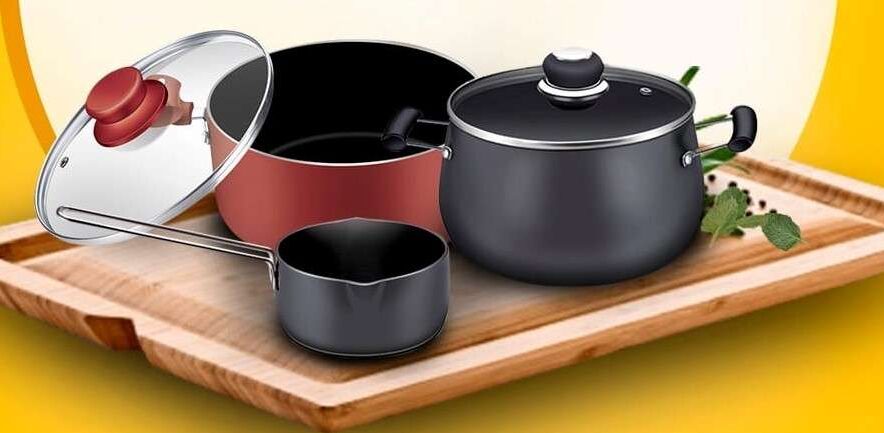Cookware of your choice can affect the nutrition quotient of the food you eat by adding nutrients to the foods, protecting the food from natural loss of nutrients during cooking, or aggravating the loss of nutrients during cooking.
In addition, some pots can intensify the flavor and aroma of a certain food by activating the flavonoids responsible for it. Here are the cooking medium and their effect on food.
- Aluminum Cookware: Aluminum is lightweight and conducts heat well. That’s good. But the metal makes some aroma chemicals smellier and flakes off, turning white foods yellow or brownish.
- Copper Cookware: Naked copper is a potentially poisonous metal. That’s why copper pots are lined with tin or stainless steel. Whenever you cook with copper, periodically check the lining of the pot. If it’s damaged have the pot relined or throw it out.
- Ceramics Cookware: Terra cotta roasting and baking pans allow excess steam to escape while holding in just enough moisture to make bread s moist and chicken tender. Decorated ceramic vessels are another matter. The glaze makes the pot much less porous, so that meat or poultry cooked in a covered painted ceramic pan steams instead of roasts.
- Enamelware Cookware: Enameled pots are made of metal covered with porcelain. Enamelware heats more slowly and less evenly than plain metal. A good-quality enameled surface resists discoloration and does not react with food. If the surface chips and you can see the metal underneath, discard the pot lest metals flake into your food.
- Iron Cookware: Iron conducts heat well and stays hot longer than other pots, and it releases iron ions into food, which may improve the nutritional value of dinner. However, more iron is not necessarily better. It encourages oxidation (bad for your body) and can contribute to excess iron storage in some people.
- Nonstick Cookware- Nonstick surfaces are made of plastic (polytetrafluoroethylene to be exact) plus hardeners. As long as the surface is unscratched and intact, the nonstick surface does not react with food. Nonstick pots are a dieter’s delight. They enable you to cook without added fat, but they scratch easily. Scratched nonstick pots and pans are not a health hazard. If you swallow tiny pieces of the nonstick coating, they pass through your body undigested.
Every cooking material has its pros and cons, and is bound to react with the food that is cooked in it because cooking itself is a reaction. The key to healthy cooking and eating is choosing the material that is best for your culinary style.

